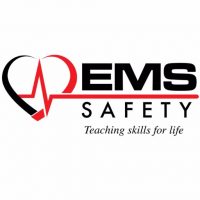Is there is a difference between incident and accident? We use to hear these terms while we are managing our safety management systems. As a language meaning, accident is an undesirable or unfortunate happening that occurs unintentionally and usually results in harm, injury, damage, or loss; casualty; mishap like automobile accidents. But incident is an individual occurrence or event, something that occurs casually in connection with something else, that can lead to serious consequences like border incident; international incident or an embarrassing occurrence, especially of a social nature. The two meaning in the same way: emergency situation exists.
Incident reports and accident reports are synonymous. The only difference is the assumption of fault: the assumption is an accident is no-fault, and an incident potentially being the fault of a person or persons. Since incidents are less costly, they can be a valuable tool for preventing an accident. Incidents can help you discover safety hazards and prevent future accidents.
Accident and Incident causes are categorized into surface or direct or immediate causes and root or underlying causes. The ‘immediate cause ‘, we are referring to the agent or direct source of the injury or ill health (e.g., tool, vehicle, substance). Underlying cause is the less obvious ‘system’ or ’organizational’ reason for an
adverse event happening, e.g. pre-start-up machinery checks are not carried out
by supervisors; the hazard has not been adequately considered via a suitable risk assessment etc. Root causes are generally management, planning or organizational failings.
As an employee and as per the Occupational Safety and Health Administration (OSHA), you always have the right to a workplace free of hazards. That means both incidents and accidents are a fair cause for concern. Incidents often have the potential for worker injury or may even be a “Near Miss” where someone almost sustains serious harm. Therefore, if you witness an incident or accident in the workplace, you are fully within your rights to report it to your management. Leadership should investigate what happened and take steps to ensure the same problem will not come up again.
Are all Accident and incident can be prevented? This idea isn’t entirely accurate, it changes the mindset of the safety measures we put in place. To achieve ZERO accident and incident in workplace, we become much more proactive. We can aim to identify and anticipate hazards before any harm occurs and put policies and procedures in place based on past incidents and near misses. The idea would be nice. However, in realty, there will always be some level of error, be it human, technological or even just bad luck.
So, all accidents are incidents, but not all incidents are accidents. Therefore, incidents are more common than accidents, in fact, accidents make up only 2% of incidents. In other words, both accident and near miss are Incidents. The difference is that, accident result in physical damage and injury while near miss do not. Whereas: Incident is any occurrence, whether it result to accident or not. OSHA just doesn’t use “accident” at all. Instead, they call everything an “incident“.
The first rule of thumb is to remember that all unexpected workplace events are incidents. However, not all incidents are accidents or near-misses. To know more information about health & safety topics, our courses and diplomas just browse our website (www.osheqplanet.com) or one of social media links, and we are sure that your safety culture & competency will be completely enhanced.




Thanks for the good article, I hope you continue to work as well.